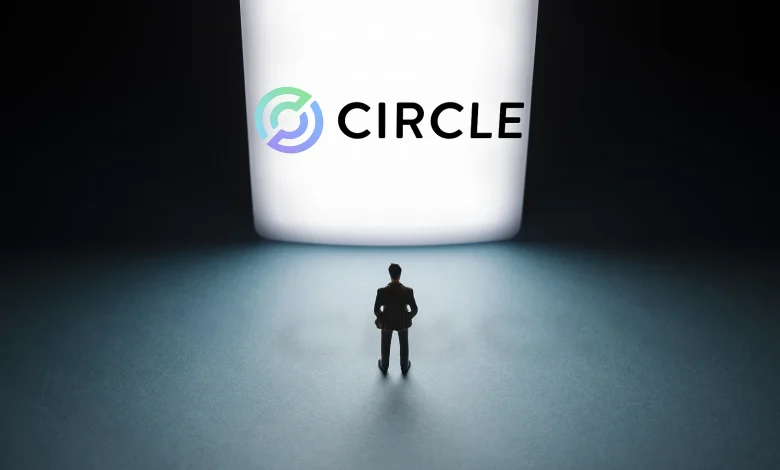Why is Coinbase willing to spend $2 billion to acquire infrastructure provider BVNK amid a wave of stablecoin mergers and acquisitions?

Original Title: “A $2 Billion Gamble? Coinbase Aims to Build a High-Speed Lane for Stablecoins via BVNK”Author: KarenZ, Foresight News
The competition for mergers and acquisitions in the stablecoin sector is intensifying. Following Stripe’s $1.1 billion acquisition of the stablecoin platform Bridge, a bidding war has erupted between Coinbase and payment giant MasterCard, with their target being the rising star in the stablecoin payment infrastructure space—BVNK.
In early October, Fortune magazine, citing sources, was the first to report that both Coinbase and payment giant MasterCard had entered negotiations to acquire BVNK, with the transaction range estimated at $1.5 billion to $2.5 billion. Based on the available signs at the time, Coinbase appeared to have gained an upper hand in this bidding contest. Coinbase Ventures, the venture capital arm of Coinbase, is already one of BVNK’s existing investors, and this foundation of ‘investing before acquiring’ seemed to pave a green path for the acquisition deal.
In November, the latest Bloomberg report further confirmed the progress of the deal: Coinbase plans to finalize the acquisition of BVNK for approximately $2 billion. At this point, both parties have entered the late-stage negotiation phase, and due diligence processes are underway. If all goes smoothly, the deal is expected to conclude by the end of 2025 or early 2026, making it the largest M&A case in the stablecoin sector.
Notably, as BVNK acquisition talks heated up, MasterCard quietly shifted its strategic focus to another target. According to Fortune magazine at the end of October, citing five informed sources, MasterCard is in advanced negotiations with Zerohash, a Chicago-based cryptocurrency infrastructure startup, planning to acquire the company for $1.5 billion to $2 billion.
Background of the BVNK Team
BVNK was founded in 2021 and is headquartered in London. The company was established by founders with experience in the fintech, banking, and digital asset sectors.
· BVNK CEO Jesse Hemson-Struthers: A serial entrepreneur whose previous ventures in e-commerce and gaming were successfully acquired by media giants Naspers and Sportradar, respectively.
· BVNK Co-founder and CTO Donald Jackson: Previously founded Cue (a self-funded customer engagement platform) and Verity (an anti-fraud services company).
· BVNK U.S. CEO Amit Cheela: Formerly served as Chief Financial Officer at BlockFi.
· Chief Compliance Officer Phil Doyle: Previously led anti-fraud and compliance efforts at Revolut, Visa, ClearBank, and Zepz.
According to the BVNK official website, its team has expanded to over 300 employees, with an annualized payment transaction volume exceeding USD 20 billion and a total financing amount reaching USD 90 million.
Financing Progress and Valuation Trajectory
In terms of financing, in May 2022, BVNK completed a USD 40 million Series A funding round, achieving a post-money valuation of USD 340 million. This round was led by Tiger Global Management, with participation from The Raba Partnership, Avenir, Kingsway Capital, Nordstar, Concentric, and Base Capital. Notably, despite incurring losses of up to USD 17 billion in the first four months of that year, Tiger Global remained steadfast in its confidence in BVNK, underscoring its belief in the company’s prospects.
In December 2024, BVNK completed a USD 50 million Series B funding round, led by Haun Ventures, with participation from Coinbase Ventures, Scribble Ventures, DRW Venture Capital, and existing investors Avenir and Tiger Global. According to Fortune magazine citing sources familiar with the matter, this round valued BVNK at approximately USD 750 million.
Entering 2025, BVNK garnered further attention from global payments giant Visa and multinational bank Citi. In May, it received strategic investment from Visa Ventures, a subsidiary of Visa, and in December, it secured additional strategic investment from Citi Ventures.
From a valuation of USD 340 million in May 2022, to USD 750 million in December 2024, and now to a negotiated acquisition price of approximately USD 2 billion, BVNK’s accelerating appreciation reflects the growing investment interest in stablecoin infrastructure and market recognition of BVNK.
Core Service System
BVNK provides a multi-layered stablecoin payment infrastructure to help businesses operate seamlessly between traditional finance and the blockchain world. Its services are divided into two major models:
· Fully managed model: Businesses can leverage BVNK’s licensing and custodial services to enable digital currency payments, with BVNK responsible for regulatory compliance and fund custody, reducing the cost of access for businesses.
· Self-managed model: BVNK offers an Infrastructure-as-a-Service product called ‘Layer1,’ designed for businesses seeking scalability and control. Companies can run stablecoin payments internally, independently connecting licenses, custodians, and liquidity partners.
Users can choose between the fully managed model or the self-managed model. The platform supports fast cross-border transfers and clearing through stablecoins while also supporting traditional fiat payment channels.
In terms of product offerings, BVNK provides functional modules such as virtual account naming, payment receipt, payment sending, real-time transfers, and embedded wallets. Businesses can integrate these features with just a few lines of code, enabling their users to receive, hold, and exchange stablecoins and fiat currencies within their own applications.
BVNK also places significant emphasis on expansion in the U.S. market. In August, BVNK announced it would provide stablecoin payment services across all 50 U.S. states through a partnership with Paxos. At that time, BVNK stated that its transaction volume had grown fourfold in just the past 60 days, and the annualized transaction volume of its U.S. operations alone was expected to exceed USD 10 billion by the end of the year.
Strong business growth
As a provider of stablecoin payment infrastructure, BVNK achieved robust business growth in 2025, with an annualized transaction processing volume exceeding USD 20 billion. Its primary clients include global payment processors like Worldpay, payment support and software companies like Flywire, and cross-border payment platforms like dLocal.
From an annualized transaction processing volume of USD 2 billion in May 2022 to USD 20 billion today, this tenfold growth rate is extremely rare in the fintech sector, clearly indicating that demand for stablecoin payments on the enterprise side has surged.
Profit Model
BVNK’s revenue primarily stems from service fees charged to merchants, with its pricing model divided into different tiers based on payment transaction volumes, adopting a fair and transparent marginal pricing strategy.
As the scale of global stablecoin payments continues to grow, BVNK’s revenue will expand accordingly, potentially forming a stable cash flow and profit growth trajectory.
The Core Logic Behind High Valuation
The core reason BVNK has achieved a rapid valuation surge in a short period lies in its construction of a ‘technology + compliance + ecosystem’ triple barrier.
On the technology front, its Layer 1 infrastructure supports multi-chain and multi-payment rails, enabling seamless integration between stablecoins and fiat currencies to meet diverse needs such as cross-border payments for enterprises, global payroll disbursement, and market trading settlements. On the compliance front, its custodial model significantly reduces the compliance costs for businesses accessing stablecoin services. On the ecosystem front, BVNK has established partnerships with industry leaders such as Worldpay, dLocal, Deel, and Xapo Bank, covering application scenarios across fintech, e-commerce platforms, global payroll, gaming, and digital asset trading.
Additionally, the explosive growth of the stablecoin industry is a key external factor contributing to BVNK’s valuation increase. With the implementation of the GENIUS Act, the United States has established a dedicated regulatory framework for stablecoins, fostering more standardized industry development. Coupled with the exemplary effect of Circle’s public listing, the institutionalization of stablecoins is accelerating, and the market demand for high-quality infrastructure service providers remains robust, providing strong support for BVNK’s valuation.
Coinbase has long been overly reliant on transaction fees, a model highly sensitive to market cycles. If the market enters a bear phase, transaction fee revenue drops sharply.
The acquisition of BVNK represents Coinbase’s strategic awakening — transitioning from a participant passively subject to market cycle fluctuations to a platform operator actively building infrastructure. Revenue generated by stablecoin infrastructure is naturally resistant to cyclical downturns. Even during periods of crypto market downturns, corporate demands for cross-border payments, payroll distribution, and treasury management persist. This predictable revenue model, based on transaction volume rather than price volatility, will significantly enhance Coinbase’s financial stability.
We can observe that nearly 19% of Coinbase’s revenue in the third quarter came from stablecoins. Meanwhile, Coinbase is continuously expanding its payment use cases, such as launching a payment API and B2B payment UI/API, enabling businesses to embed stablecoin checkouts with USDC via the Base chain, along with features like 24/7 payments.
It is conceivable that after acquiring BVNK, Coinbase will possess even more robust payment infrastructure. Through BVNK’s payment network, USDC can flow more rapidly to enterprises and consumers globally, evolving into a true payment currency rather than merely a trading instrument.
The traditional payment system, built around credit cards and bank accounts in a ‘channel + platform’ model, may be disrupted by a new paradigm of ‘infrastructure + application.’
Participants like Coinbase and Stripe have the potential to demonstrate that when payment infrastructure is sufficiently open and modular, third-party applications can swiftly build various payment services akin to assembling building blocks.
The future payment market may no longer be dominated by the ‘channel monopolies’ of Visa and Mastercard but instead characterized by competition among multiple open stablecoin payment infrastructure platforms, each striving to attract as many applications and users as possible.
From a broader perspective, the stablecoin payment acquisitions by Coinbase and Stripe are not isolated events but reflect profound transformations within the entire financial ecosystem. Stablecoins, once a peripheral topic in the crypto space, have now become a mainstream force that the global financial system must address. At this historical juncture, whoever controls the best payment infrastructure will hold the key to the future of finance.





